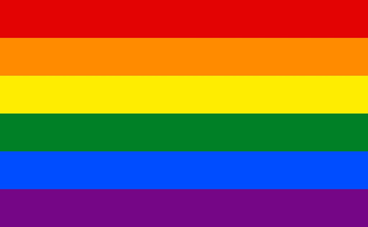By Mark Cook, Care and Support Area Manager
I recently completed Riverside’s e-learning module on sexual orientation and it made me think about how I have supported others through times of distress and shame about their sexual orientation and also about my own experiences.
I am very clear about being attracted to the same sex and have been for many years. There was period around the age of 21 when I had a relationship with a girl who I was planning to marry. I was attracted to her but I am unsure if this was from pressure to conform in a family of four brothers and a sister who were all getting married or, if I really wanted to have a relationship with her.
Sexual orientation is about who you’re attracted to and want to have relationships with.
Sexual orientations include gay, lesbian, straight, bisexual, transsexual and non-binary.
Sexual orientation is different from gender and gender identity.
Sexual orientation is about who you’re attracted to and who you feel drawn to romantically, emotionally and sexually. It’s different than gender identity. Gender identity isn’t about who you’re attracted to, but about who you are — male, female, trans, etc.
This means that being transgender – feeling like your assigned sex is very different from the gender you identify with – isn’t the same thing as being gay, lesbian, or bisexual. Sexual orientation is about who you want to be with. Gender identity is about who you are.
There are a bunch of identities associated with sexual orientation:
- People who’re attracted to a different gender (for example, women who are attracted to men or men who are attracted to women) often call themselves straight or heterosexual.
- People who’re attracted to people of the same gender often call themselves gay or homosexual. Gay women may prefer the term lesbian.
- People who’re attracted to both men and women often call themselves bisexual.
- People whose attractions span across many different gender identities (male, female, transgender, non-binary, etc.) may call themselves pansexual.
- People who’re unsure about their sexual orientation may call themselves questioning or curious.
- People who don’t experience any sexual attraction for anyone often call themselves asexual.
It’s also important to note that some people don’t think any of these labels describe them accurately. Some people don’t like the idea of labels at all. Other people feel comfortable with certain labels and not others. It’s up to you to decide how you want to label yourself, if at all.
What if I don’t want to be labelled?
It’s okay if you don’t want to be labelled. Only you can decide what sexual identity best describes you. But some people may feel that none of the common labels feel right to them.
Your sexual orientation and identity can remain the same throughout your life. Or it can vary depending on who you’re attracted to, or romantically partnered or sexually active with. This is completely normal. Once you claim a label, there’s no reason why it can’t change as you change.
Changing how you identify doesn’t mean that you’re ‘confused’. Many folks, old and young, experience changes in who they’re attracted to and how they identify. This is called ‘fluidity’.
I found the Sexual Orientation e-learning very thought provoking and made me more aware of how others might or might not want to be named if at all.
